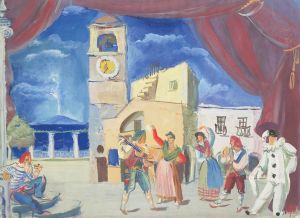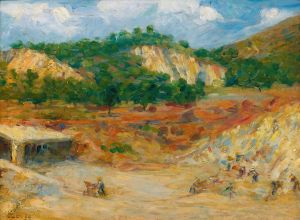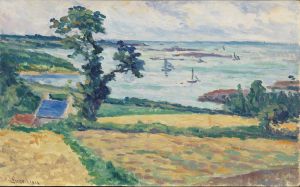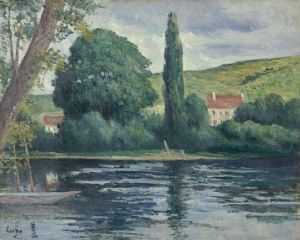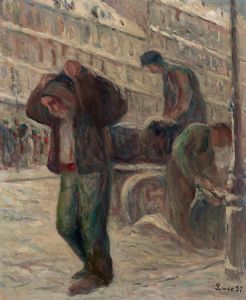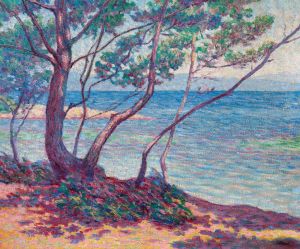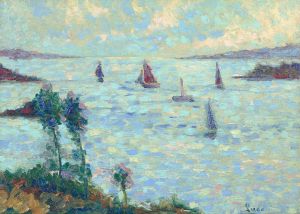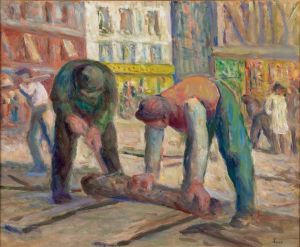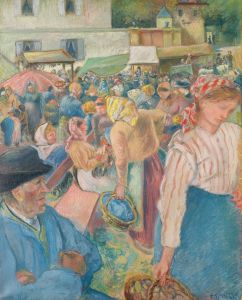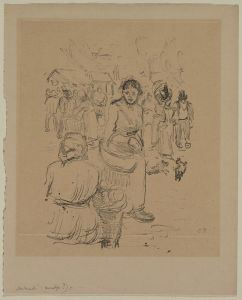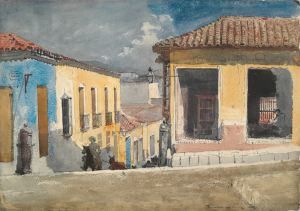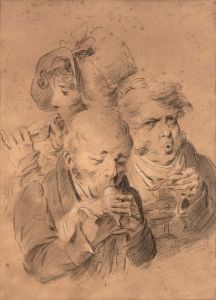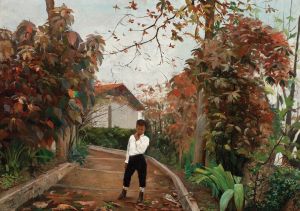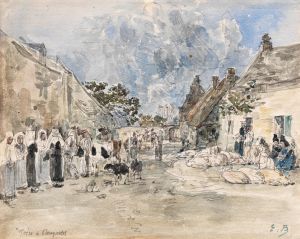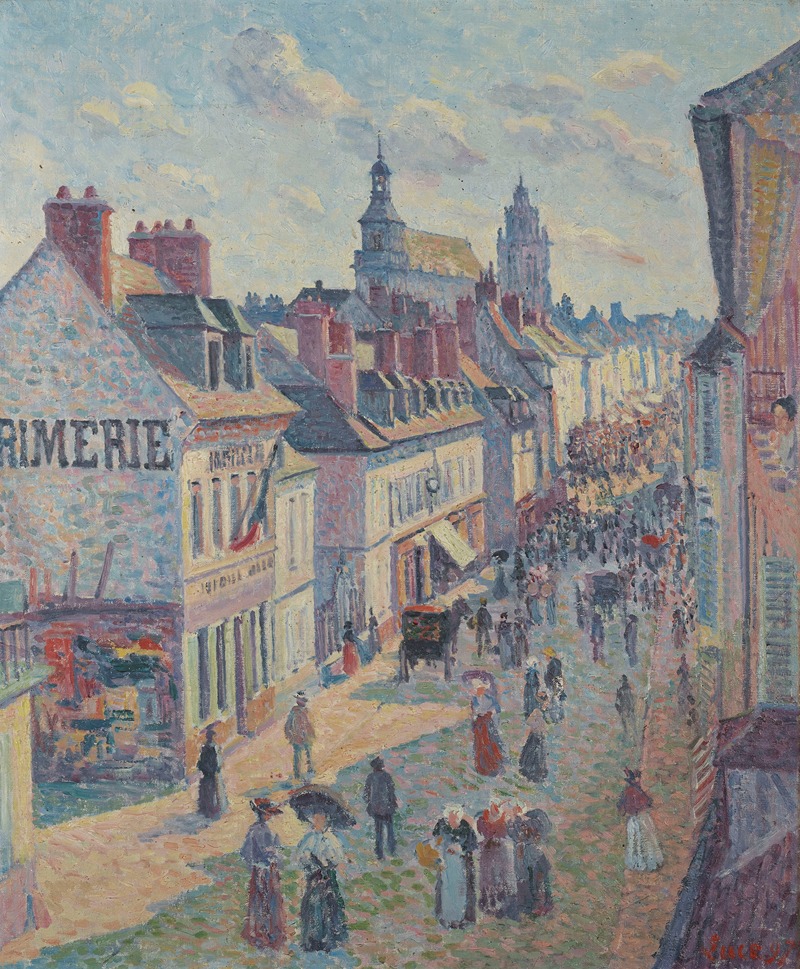
Jour de marché à Gisors
A hand-painted replica of Maximilien Luce’s masterpiece Jour de marché à Gisors, meticulously crafted by professional artists to capture the true essence of the original. Each piece is created with museum-quality canvas and rare mineral pigments, carefully painted by experienced artists with delicate brushstrokes and rich, layered colors to perfectly recreate the texture of the original artwork. Unlike machine-printed reproductions, this hand-painted version brings the painting to life, infused with the artist’s emotions and skill in every stroke. Whether for personal collection or home decoration, it instantly elevates the artistic atmosphere of any space.
Maximilien Luce was a prominent French Neo-Impressionist painter known for his vibrant use of color and light, and his dedication to depicting everyday life. One of his notable works is "Jour de marché à Gisors" (Market Day at Gisors), which captures the bustling atmosphere of a market day in the small town of Gisors, located in the Normandy region of France. This painting is a testament to Luce's skill in portraying the lively and dynamic scenes of rural and urban life, a common theme in his oeuvre.
"Jour de marché à Gisors" exemplifies Luce's mastery of the Pointillist technique, a method he adopted after being influenced by Georges Seurat and Paul Signac. This technique involves applying small, distinct dots of color in patterns to form an image. Luce's use of this technique in "Jour de marché à Gisors" allows him to capture the vibrancy and movement of the market scene, as well as the play of light and shadow. The painting is characterized by its bright, harmonious colors and the meticulous attention to detail, which together create a sense of immediacy and presence.
The scene depicted in "Jour de marché à Gisors" is typical of Luce's interest in capturing the essence of everyday life. The painting shows a busy market square filled with vendors and shoppers, each engaged in their activities. The composition is lively, with figures interacting, goods displayed, and the architecture of the town providing a backdrop. Luce's ability to convey the energy and rhythm of the market day is evident in the way he arranges the figures and uses color to guide the viewer's eye through the scene.
Maximilien Luce was not only an artist but also an anarchist, and his political beliefs often influenced his work. He was deeply concerned with social issues and the lives of ordinary people, which is reflected in his choice of subject matter. By focusing on scenes like market days, Luce highlighted the communal aspects of life and the interactions between people from different walks of life. This focus on the human element is a hallmark of his work and contributes to the enduring appeal of paintings like "Jour de marché à Gisors."
Luce's work, including "Jour de marché à Gisors," is part of the broader Neo-Impressionist movement, which sought to bring scientific precision to the Impressionist approach to color and light. This movement was characterized by a systematic and analytical approach to painting, with artists like Luce using color theory to enhance the emotional and visual impact of their work. The influence of this movement is evident in the way Luce uses color to create depth and atmosphere in "Jour de marché à Gisors."
"Jour de marché à Gisors" is an important work within Luce's body of work and within the context of Neo-Impressionism. It showcases his ability to blend technical skill with a deep empathy for his subjects, resulting in a painting that is both visually striking and rich in social commentary. Today, Luce's paintings are appreciated for their beauty and their insight into the social fabric of his time, and "Jour de marché à Gisors" remains a significant example of his artistic legacy.





